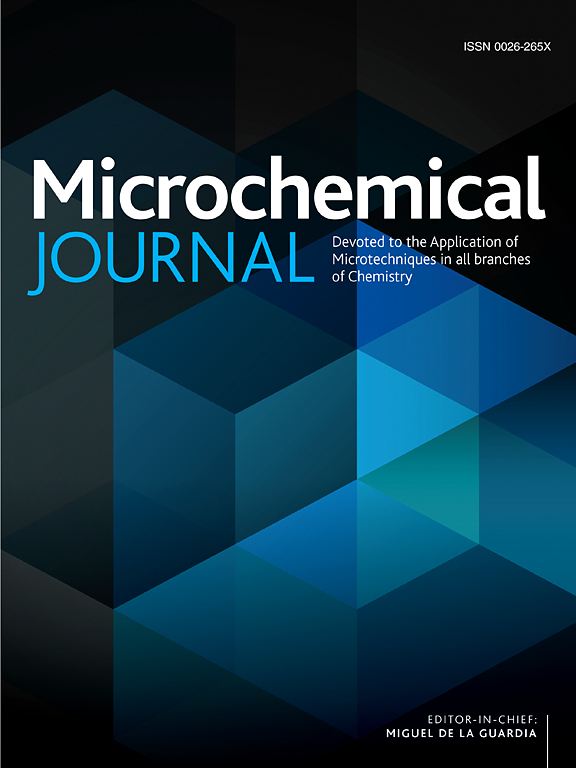Two lateral flow immunoassay assays based on different nanoparticle probes for the on-site detection of Streptococcus pyogenes in raw milk
IF 4.9
2区 化学
Q1 CHEMISTRY, ANALYTICAL
引用次数: 0
Abstract
Mastitis, a common disease in dairy cows, impacts both dairy cows health and farm profitability. Streptococcus pyogenes, a major pathogen, can cause outbreaks in cows and foodborne illnesses, threatening dairy product safety. Given the specificity of the cows farm location and limited testing resources and possible missed detections due to the presence of several different subtypes of S. pyogenes, two rapid tests were developed: a latex beads-based lateral flow immunoassay (LBs-LFIA) and a fluorescent immunoassay using europium nanoparticles (EuNPs-LFIA). LBs-LFIA can detect S. pyogenes in raw milk at 105 CFU/mL within 15 min without complex pre-treatment, aiding in mastitis diagnosis. EuNPs-LFIA offers quantifiable detection with a sensitivity of 5 × 103 CFU/mL. In field tests, these methods detected S. pyogenes in 4.62 % (9/195) of raw milk samples, aligning with standard methods. These tools provide effective on-site detection options for dairy product safety and contribute to dairy cow health monitoring.

基于不同纳米颗粒探针的两种侧流免疫分析方法用于原料奶中化脓性链球菌的现场检测
乳腺炎是奶牛的常见病,对奶牛健康和牧场收益都有影响。化脓性链球菌是一种主要病原体,可导致奶牛疾病爆发和食源性疾病,威胁乳制品安全。考虑到奶牛场位置的特异性和有限的检测资源,以及由于存在多种不同亚型的化脓性链球菌而可能造成的漏检,我们开发了两种快速检测方法:基于乳胶珠的侧流免疫分析法(LBs-LFIA)和使用铕纳米颗粒的荧光免疫分析法(EuNPs-LFIA)。LBs-LFIA 可在 15 分钟内检测出生乳中 105 CFU/mL 的化脓性链球菌,无需复杂的预处理,有助于乳腺炎的诊断。EuNPs-LFIA 可进行定量检测,灵敏度为 5 × 103 CFU/mL。在现场测试中,这些方法在 4.62 %(9/195)的生乳样本中检测到了化脓性链球菌,与标准方法一致。这些工具为乳制品安全提供了有效的现场检测选择,有助于奶牛健康监测。
本文章由计算机程序翻译,如有差异,请以英文原文为准。
求助全文
约1分钟内获得全文
求助全文
来源期刊

Microchemical Journal
化学-分析化学
CiteScore
8.70
自引率
8.30%
发文量
1131
审稿时长
1.9 months
期刊介绍:
The Microchemical Journal is a peer reviewed journal devoted to all aspects and phases of analytical chemistry and chemical analysis. The Microchemical Journal publishes articles which are at the forefront of modern analytical chemistry and cover innovations in the techniques to the finest possible limits. This includes fundamental aspects, instrumentation, new developments, innovative and novel methods and applications including environmental and clinical field.
Traditional classical analytical methods such as spectrophotometry and titrimetry as well as established instrumentation methods such as flame and graphite furnace atomic absorption spectrometry, gas chromatography, and modified glassy or carbon electrode electrochemical methods will be considered, provided they show significant improvements and novelty compared to the established methods.
 求助内容:
求助内容: 应助结果提醒方式:
应助结果提醒方式:


